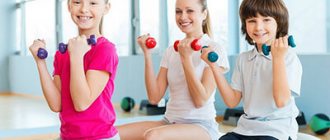From this medical article you can familiarize yourself with the drug Amoxicillin. The instructions for use will explain in what cases the medicine can be taken, what it helps with, what are the indications for use, contraindications and side effects. The annotation presents the forms of release of the drug and its composition.
In the article, doctors and consumers can only leave real reviews about Amoxicillin, from which you can find out whether the medicine helped in the treatment of pneumonia, bronchitis, pyelonephritis and other infectious pathologies in children and adults. The instructions list analogues of Amoxicillin, prices of the drug in pharmacies, as well as its use during pregnancy.
Amoxicillin is a semisynthetic antibiotic of the penicillin group with a broad antibacterial effect.
Pharmacological properties
Amoxicillin is a broad-spectrum antibacterial, acid-resistant, bactericidal agent from the group of semisynthetic penicillins. Inhibits transpeptidase, disrupts the synthesis of peptidoglycan (supporting protein of the cell wall) during division and growth, and causes lysis of bacteria.
Shows activity against aerobic gram-positive and aerobic gram-negative bacteria. Microorganisms that produce penicillinase are resistant to amoxicillin.
The effect of Amoxicillin begins half an hour after administration and lasts for 6-8 hours, therefore, to maintain a constant concentration of the drug in the body, it is prescribed three times a day. The drug is effective against most pathogens, with the exception of strains that produce penicillinase.
Reviews
Amoxicillin has mostly good reviews. The drug quickly relieves the symptoms of the disease, and side effects are extremely rare. A big advantage is the fact that the medicine can be taken regardless of food.
However, sometimes there are cases where amoxicillin is ineffective. This happens if the drug was prescribed without a preliminary sensitivity test. As a result, patients perceive the medicine as ineffective.
When combined with clavulanic acid, amoxicillin becomes more effective and has fewer side effects, which is why this combination of drugs is more popular.
Amoxicillin is an effective antibiotic that can be prescribed even to children. Its great advantage is its wide spectrum of action, due to which it can be used to treat a huge range of diseases.
What does Amoxicillin help with?
Indications for use include the treatment of bacterial infections caused by sensitive microflora:
- salmonella carriage;
- Lyme disease (borreliosis);
- endocarditis (prevention);
- listeriosis;
- salmonellosis;
- infections of the skin and soft tissues (erysipelas, impetigo, secondary infected dermatoses); leptospirosis;
- infections of the respiratory tract and ENT organs (sinusitis, pharyngitis, tonsillitis, acute otitis media; bronchitis, pneumonia);
- infections of the genitourinary system (pyelonephritis, pyelitis, cystitis, urethritis, gonorrhea, endometritis, cervicitis);
- sepsis;
- dysentery;
- meningitis;
- gastrointestinal infections (peritonitis, enterocolitis, typhoid fever, cholangitis, cholecystitis).
Instructions for use
Amoxicillin should be taken orally with water. You can take the antibiotic regardless of food intake.
Pills
For adult patients and children over 12 years of age, 500 mg of amoxicillin is usually prescribed three times a day. However, the dosage depends on the disease and the doctor’s prescription in each specific case. For severe diseases, the dose can be increased to 750-1000 mg, the highest permissible dose per day is 6 g.
High doses of the drug are prescribed for typhoid fever (1.5-2 g three times a day), for leptospirosis (500-750 mg four times a day). Tablets or capsules should be taken for another two or three days even after the signs of the disease disappear. In most cases, treatment lasts from 5 to 12 days.
Instructions for use of Amoxicillin suspension
The syrup is used to treat children under 5 years of age. The suspension must be prepared immediately before starting treatment. To do this, add cool water to the bottle with granules, after which the mixture must be shaken. The suspension can be stored for 14 days at room temperature.
The medicine must be shaken each time before use. One measuring spoon contains 5 ml of suspension, respectively, it contains 250 mg of amoxicillin.
Children under 2 years of age should receive no more than 20 mg of the drug per 1 kg of weight per day.
- Children aged 2 to 5 years are recommended to take 125 mg of the drug.
- Children 5-10 years old receive a single dose of 250 mg.
- Children over 10 years old receive a single dose of 250-500 mg, if the disease is severe - up to 1 g.
Disease treatment plan
- For leptospirosis in adults - 0.5-0.75 g 4 times a day for 6-12 days.
- For salmonella-carrying adults - 1.5-2 g 3 times a day for 2-4 weeks.
- For the prevention of endocarditis during minor surgical interventions for adults - 3 - 4 g 1 hour before the procedure. If necessary, a repeat dose is prescribed after 8-9 hours. In children, the dose is reduced by 2 times.
- For acute uncomplicated gonorrhea, 3 g is prescribed once; When treating women, repeated administration of the indicated dose is recommended.
- For acute infectious diseases of the gastrointestinal tract (paratyphoid fever, typhoid fever) and biliary tract, for gynecological infectious diseases for adults - 1.5-2 g 3 or 1-1.5 g 4 times a day.
Release form
Amoxicillin for children is available in three forms:
o tablets (250 - 500 mg);
o capsules (250 - 500 mg);
o syrup or powder for suspension (5 ml contains 250 mg of active substance).
For children, the suspension is most suitable. The powder should be diluted immediately before use.
Side effect
According to the instructions, the drug Amoxicillin can cause such negative reactions as:
- confusion;
- fever;
- superinfection (especially in patients with chronic diseases or reduced body resistance);
- tachycardia;
- joint pain;
- conjunctivitis;
- vomiting, nausea;
- erythema;
- angioedema;
- anemia;
- behavior change;
- dysbacteriosis;
- diarrhea;
- Stevens-Johnson syndrome;
- hives;
- leukopenia, neutropenia;
- excitation;
- anaphylactic shock;
- headache, dizziness;
- depression;
- eosinophilia;
- insomnia;
- rhinitis;
- skin hyperemia;
- anxiety;
- stomatitis, glossitis.
Contraindications
The use of the medicine is prohibited if the patient has:
- bronchial asthma;
- allergic diathesis;
- liver failure;
- hypersensitivity (including to other penicillins, cephalosporins, carbapenems) and the composition of the drug Amoxicillin, from which syrup and tablets can cause adverse reactions;
- lymphocytic leukemia;
- hay fever;
- lactation period;
- history of gastrointestinal diseases (especially colitis associated with the use of antibiotics);
- Infectious mononucleosis.
Amoxicillin (tablets) prescription in Latin
Rp.: Tab.
Amoxicillini 0.5D.tdN 35 in tab.S. 1 tablet every 8 hours three times a day – 7 days Rp.: Amoxicillini pro inject. 0.5D.td N. 15S. Intravenous stream 3 times a day. Currently, amoxicillin for injection is not registered in the Russian Federation.
The course of treatment with the drug is at least 5 days; it is necessary to continue therapy with the drug for at least 2-3 days after the patient’s temperature has normalized; when treating an infection caused by streptococci, the drug is prescribed for a course of at least 10 days.
Active ingredient: Amoxicillin (Amoxycillinum) (INN) Pharmacological group: Antibiotics Prescription form: N 107-1/у Trade names:
- Amoxiclav
- Amoxicillin
- Augmentin
- Flemoxin
- Ecoball
Important!
This drug belongs to the penicillin antibiotics and is not recommended for use in persons with hypersensitivity to penicillins. Use in pregnant and lactating women is possible; in clinical practice over the past 10 years, no reliable data on a terratogenic effect have been identified.
When used together, it reduces the effectiveness of estrogen-containing COCs (combined oral contraceptives). Absorption in the intestine is reduced when administered together with antacids.
Recipes in Latin
- Adrenaline (solution)
- Azithromycin (tablets)
- Actovegin (solution, tablets)
- Adaptol (tablets)
- Aminazine (solution, dragee)
- Amiodarone (solution, tablets)
- Amitriptyline (tablets) prescription in Latin
- Amoxicillin (tablets) prescription in Latin
- Analgin (tablets, solution)
- Anaprilin (tablets, solution)
- Ascorbic acid (tablets and solution)
- Atarax (tablets) recipe in Latin
- Atropine (drops)
- Atropine (solution)
- Amoxiclav (tablets)
- Augmentin (tablets) prescription in Latin
- Bellataminal (tablets) recipe and composition in Latin (Latin)
- Bromhexine (tablets)
- Verapamil (tablets, solution) prescription in Latin
- Heparin (solution)
- Glucose (solution)
- Grandaxin (tablets) prescription in Latin
- Diazepam (tablets, solution)
- Diclofenac (tablets)
- Diphenhydramine (tablets, solution)
- Digoxin (tablets, solution)
- Doxycycline (tablets) prescription in Latin
- Zaldiar (tablets) recipe in Latin
- Zolpidem (tablets) prescription in Latin
- Isadrin (tablets)
- Imovan (tablets) recipe in Latin
- Iodine (alcohol solution) recipe in Latin
- Carbamazepine (tablets) prescription in Latin
- Ketorolac (tablets, solution)
- Clarithromycin (tablets) prescription in Latin
- Clozapine (tablets)
- Clonazepam (tablets) prescription in Latin
- Clonidine (tablets) recipe in Latin
- Cordiamine (solution, drops)
- Caffeine (tablets, solution) recipe in Latin
- Mezaton (solution) recipe in Latin
- Mexidol (tablets, solution)
- Meloxicam (tablets, solution) recipe in Latin
- Metoclopramide (tablets) prescription in Latin
- Metronidazole (tablets, solution) recipe in Latin
- Miramistin (solution) recipe in Latin
- Magnesia (solution)
- Naphthyzin (drops) recipe in Latin
- Nitroglycerin (solution) recipe in Latin
- Novocaine (solution) recipe in Latin
- Oxytocin (solution)
- Omeprazole (capsules) prescription in Latin
- Paracetamol (tablets, solution) recipe in Latin
- Pentalgin (tablets) recipe in Latin
- Pentalgin N (tablets) recipe in Latin
- Platiphylline (solution, tablets, drops)
- Piracetam (solution)
- Pregabalin (capsules) prescription in Latin
- Prednisolone (solution)
- Prednisolone (tablets)
- Prozerin (solution) recipe in Latin
- Ringer's (solution)
- Salbutamol (aerosol) recipe in Latin
- Sedal M (tablets)
- Seduxen (tablets, solution)
- Spectracef (tablets) prescription in Latin
- Sumamed (tablets)
- Teraligen (tablets) prescription in Latin
- Tramadol (tablets, solution)
- Chlorprothixene (tablets) prescription in Latin
- Ceftriaxone (solution) prescription in Latin
- Tsiprolet recipe in Latin
- Ciprofloxacin prescription in Latin
- Phenazepam (tablets)
- Phenibut (tablets) prescription
- Phenobarbital (tablets) prescription in Latin
- Flemoxin Solutab (tablets)
- Fluoxetine (tablets, capsules) prescription in Latin
- Furacilin (tablets)
- Furosemed (tablets, solution)
- Eufillin (solution) recipe in Latin
- Eglonil (tablets) prescription in Latin
- Enalapril (tablets, solution) prescription in Latin
- Ethyl alcohol (solution)
- Eufillin (tablets) recipe in Latin
During pregnancy and lactation
It should be borne in mind that the substance amoxicillin can penetrate the placental barrier. But still, during pregnancy, according to indications, this remedy is prescribed to women for inflammatory diseases. It is prescribed for bacterial infections.
The drug can provoke the development of dysbacteriosis, allergic reactions, and activation of fungal microflora. Reviews of Amoxicillin during pregnancy generally indicate its effectiveness and rare occurrence of side effects.
The drug should not be taken during lactation, as it passes into breast milk. If treatment of inflammatory processes during lactation is required, another drug is prescribed or breastfeeding is stopped.
Contraindications, side effects and overdose
Amoxicillin is often used in medical practice, as it is an inexpensive but effective remedy. However, there are a number of contraindications for which it is necessary to choose other medications.
This list included:
- asthma;
- hay fever;
- viral diseases;
- hypersensitivity to the penicillin group;
- lymphocytic leukemia;
- allergic reactions;
- mononucleosis.
In some cases, the medicine may cause side effects.
Most often this is:
- manifestations of allergic reactions - swelling, itching, rash on the body;
- development of resistance to the drug - bacteria do not die, but develop resistance;
- reactions from the digestive tract - constipation alternating with diarrhea, bloating, nausea;
- negative effects on the central nervous system during long-term treatment - headaches in the patient, convulsions, depression.
The main side effect of any antibiotics is the development of dysbiosis. This is possible, since the medicine will destroy all bacteria, including beneficial ones, that inhabit the final sections of the gastrointestinal tract.
To prevent the development of digestive disorders, doctors advise taking probiotics – Linex, Bifiform – in parallel with the antibiotic.
These drugs stimulate the development of normal microflora in the intestines.
Interaction with other drugs
Enhances the absorption of digoxin. Increases the effectiveness of indirect anticoagulants (suppressing intestinal microflora, reduces the synthesis of vitamin K and the prothrombin index). Monitoring of prothrombin time should be carried out when administered concomitantly with anticoagulants.
Reduces the effectiveness of estrogen-containing oral contraceptives, drugs whose metabolism produces para-aminobenzoic acid, ethinyl estradiol - the risk of breakthrough bleeding. Reduces clearance and increases toxicity of methotrexate.
Special conditions
Patients with gonorrhea should undergo serologic testing for syphilis at the time of diagnosis. Patients treated with amoxicillin should undergo serological follow-up for syphilis after 3 months. Use with caution in patients prone to allergic reactions.
During long-term therapy, it is necessary to monitor the state of the function of the hematopoietic organs, liver and kidneys. It is possible that superinfection may develop due to the growth of microflora that is insensitive to it, which requires a corresponding change in antibacterial therapy. When prescribed to patients with sepsis, a bacteriolysis reaction is rarely possible.









